Looking for an interesting and unusual material for decorating an expressive accent wall? Do you love classic interiors and wood paneling, but find it too expensive and impractical? We have a solution to your problems! Laminate on the wall can easily accomplish these tasks, won’t require huge investments from you, and won’t cause any difficulties during use. And we’ll tell you how to choose it and what to do with it!
Advantages and disadvantages
Laminate is a relatively inexpensive and affordable material that will cost much less than real wood panels. At the same time, in terms of quality, it is in no way inferior to them if the wear resistance class is chosen correctly. Even visually, it is quite difficult to distinguish high-quality laminate from the wood it imitates.
Decor
Collections from major manufacturers offer a variety of shades and textures. In addition to classic wood laminate, there are entire series imitating stone, masonry, monolithic colored coatings, and other interesting solutions.
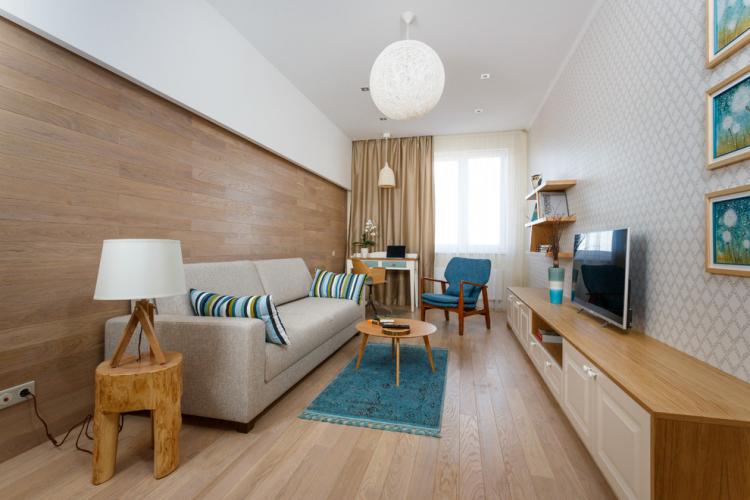
Wear resistance and insulation
Wear-resistant laminate is a practical coating that does not require complex care, unlike natural boards. It can be wiped with a regular cloth and polished with special products.
Finishing walls with laminate improves the thermal and sound insulation properties of the room. And if necessary, there are special collections that are moisture-resistant, fire-resistant, and impact-resistant.

Application
You can install laminate yourself due to its user-friendly locking system. While there are differences between wall and floor installation, you can manage the process if you approach it with care and precision.
Laminate is a lightweight material compared to heavier options like wood, ceramic tiles, or natural stone. As a result, it doesn’t burden the foundation and can even be used to cover decorative drywall structures.

Disadvantages
When laying laminate, the wall must be perfectly even and without unevenness, otherwise, battens will be needed. The material is sensitive to moisture and temperature changes, so only specialized series are suitable for kitchens and bathrooms. This type of cladding requires space and takes up valuable centimeters, making it not the best option for small rooms.

Color solutions
Most often, classic laminate imitating wooden panels is laid on the walls. In private houses and classic interiors, it looks good as the main material.
But you can also use it instead of an accent: for finishing functional areas, niches under the TV, spaces behind the headboard of the bed. In small rooms, it looks stylish when creating a transition from wall finishing to floor finishing. This technique visually enlarges the room and corrects its geometry.
Light, bleached or aged laminate will fit into rustic country and romantic Provence styles. Dark panels imitating valuable wood species are good for neoclassical, English, or modern styles.
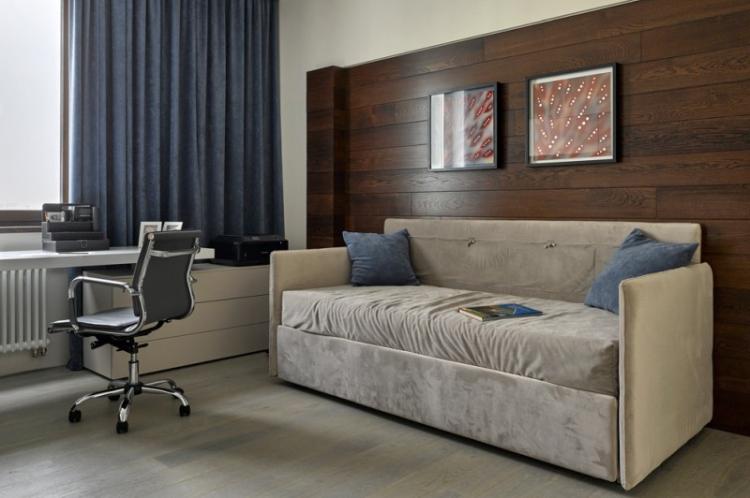

Laying and installing laminate on the wall
Install laminate on walls in different ways, depending on the desired effect, type of covering, and base quality. Use auxiliary materials more frequently than in floor installation to prevent boards from shifting over time.
One easy option involves applying special glue or liquid nails, suitable only for a perfectly even base. Mechanical fasteners, such as clamps similar to those for MDF panels, are also an option.
When walls have significant defects or unevenness, lay laminate on wooden battens. Create the frame base from timber, pre-treated with primer and antiseptics. Alternatively, use a metal frame made of aluminum profiles for heavy and massive boards, although this option is less common.

Lamellae do not necessarily have to be laid strictly horizontally and vertically. As with flooring, diagonal installation, offset installation, checkerboard order, different combinations, and transitions are used. The main thing is to draw up a scheme and connect the boards together and with the corners of the room.
For the work, you will need a drill, a construction level and tape measure, a screwdriver, a hammer, pliers and a jigsaw, different types of spatulas, and a container for mixing glue. And don’t lay the freshly purchased laminate: it should lie in the room for at least a few days.

Frame mounting allows you to hide all communications inside and lay an additional insulation layer. The step between the timber and profiles depends on the size of the lamellae – they should be convenient to fasten. Carefully check the level of the extreme timbers because the flatness of the entire coating depends on them.
If the laminate is laid vertically, the frame is horizontal, and vice versa. When laying boards, use holders to prevent them from shifting because the quality of the entire job depends on the first row.
Don’t forget about temperature gaps at the floor and ceiling, which can be hidden with special skirting boards and planks. And treat the joints with silicone sealants to make the coating stronger and more durable.
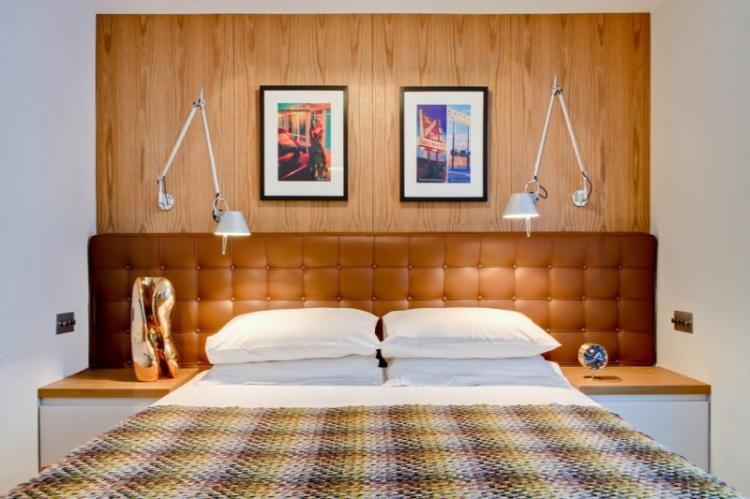
Laminate on the wall in interior design – photos
The possibilities for using laminate in interior design are practically limitless. Its natural wood texture fits into any interior style, from classic to trendy Scandinavian.
Laminate on kitchen walls
The covering on kitchen walls must be durable and wear-resistant, so don’t skimp on the class of laminate. Choose moisture-resistant collections that can be easily cleaned of stains and grease.
Remember that during temperature changes, laminate quickly loses its attractive appearance. Therefore, if you want to use it to cover the backsplash and working area, it’s better to install a protective glass panel over it. It looks stylish, lasts much longer, and is much easier to care for.
Laminate is good for zoning, so you can use it to highlight an accent wall by the bar or dining area. If you have a large kitchen or spacious studio, use it to separate the relaxation area.







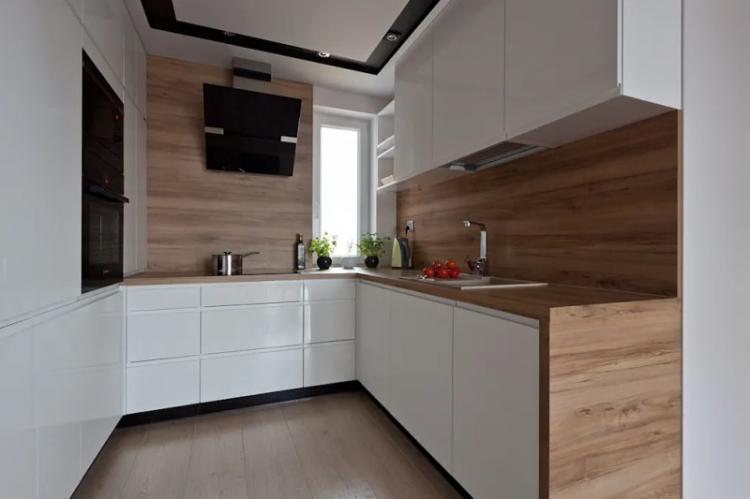

Laminate on living room walls
Use laminate to cover the wall under the TV, around the fireplace, or around the aquarium – it always looks expensive and noble. Another convenient trick is to cover a separate corner where you can place a sofa or work area.
Covering it to look like old rough wood complements industrial lofts or grunge interiors. This is a good alternative if you don’t want to spend time on brickwork. Hang massive open shelves and decorative lighting fixtures over the covering.
Laminate for noble wood types complements classic interiors and their modern interpretations. You can use it to cover niches and arches with simple and concise geometry. And if you correctly select the direction of the panels during installation, you can visually increase the room or raise the ceilings.







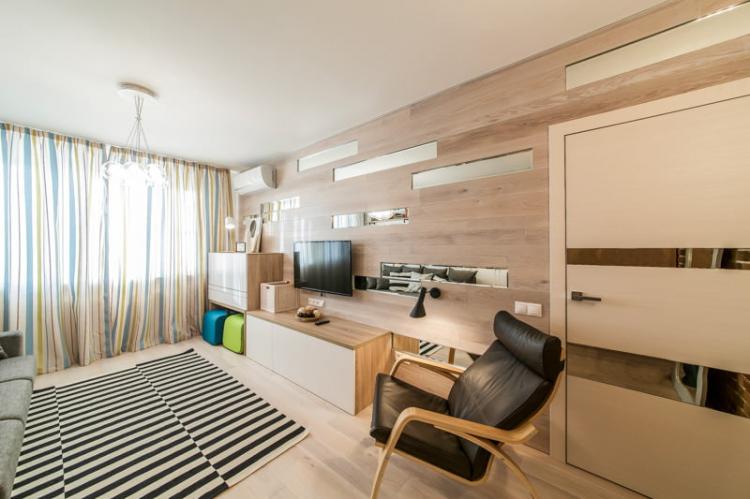
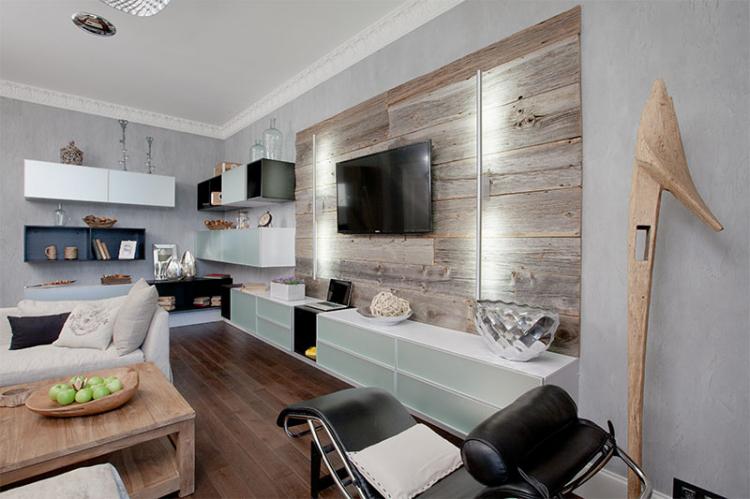
Laminate on bedroom walls
Wooden finishes always evoke warmth, coziness, and a homey feel. Therefore, in the bedroom, elegant natural materials are especially appropriate.
A smooth transition of the same covering from the floor to the wall looks interesting. This way, you can highlight the bed area, especially in interiors that lean towards pronounced centers and symmetrical compositions. Place bedside tables with lamps or wall sconces on both sides.
If you have little wooden furniture in your bedroom, feel free to cover large areas with laminate. This way, the texture won’t repeat too often and won’t look overloaded. And if you just want to freshen up the interior or decorate a small bedroom, a wooden panel made of laminate planks looks fresh and original.




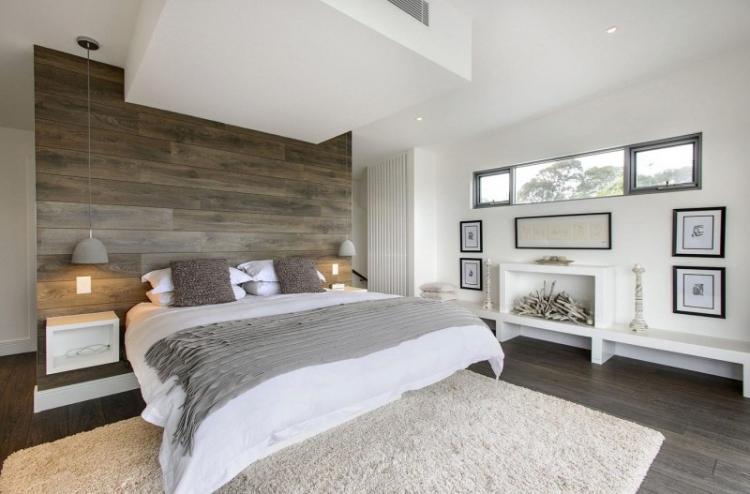

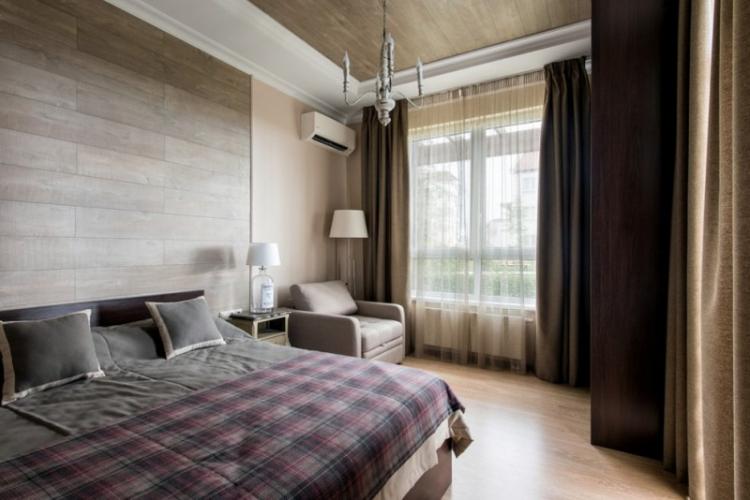
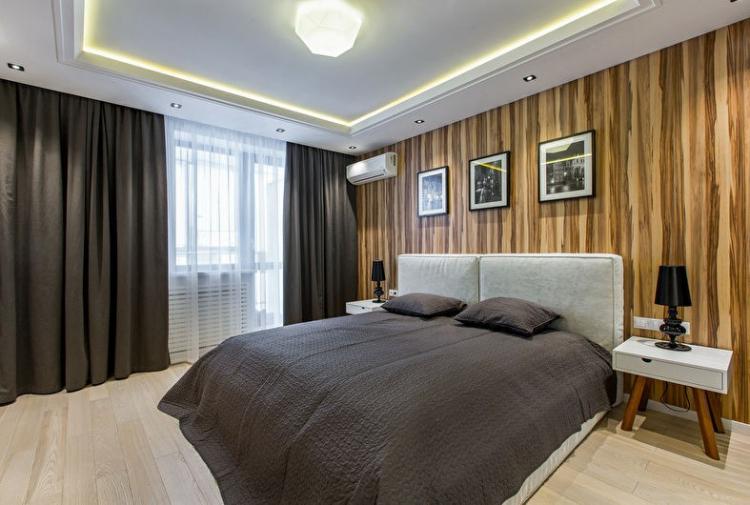


Laminate on the walls in the hallway
Laminate on the walls in the hallway creates a cohesive and harmonious composition when combined with the floor covering. You can choose one design but different wear classes to avoid overpaying. In spacious and bright rooms, a combination of wall laminate with brickwork, stone, or textured wallpaper looks interesting. If the hallway is small and narrow, only laminate a small lower strip of the wall, and this will help you visually correct the geometry.






Laminate on the balcony walls
Laminate is not suitable for open balconies because it quickly deteriorates due to weather conditions. However, on ordinary enclosed balconies, it is practical and appropriate. The main thing is high-quality insulation because if the temperature drops below 41-45 degrees Fahrenheit in winter, the coating will deteriorate over time.
For balconies, choose moisture-resistant collections with additional protective coating against ultraviolet rays. This way, the boards will not swell, crack, or fade in the sun. And to prevent the panels from deforming due to weather fluctuations, fix them not too tightly and not on standard laminate locks.




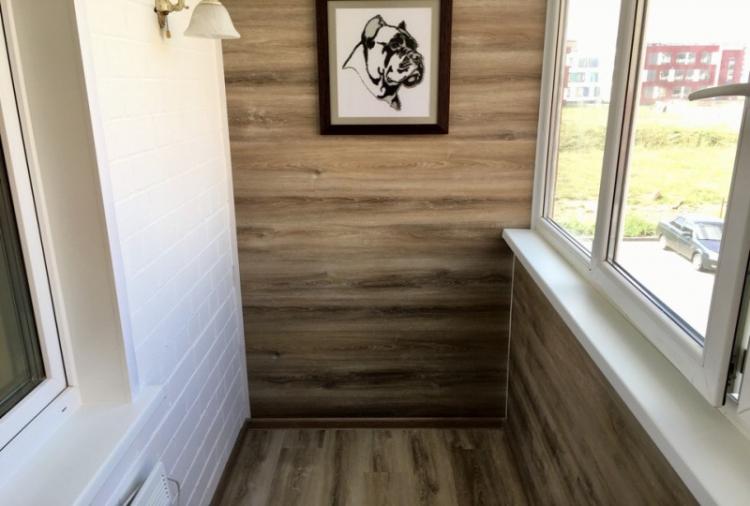







Leave feedback about this